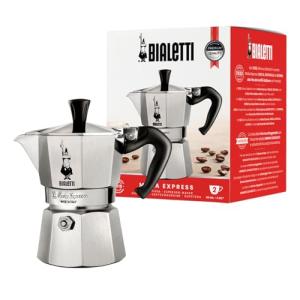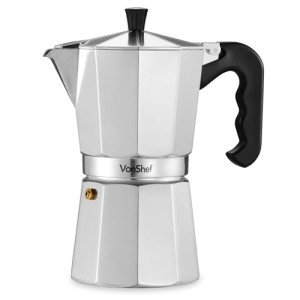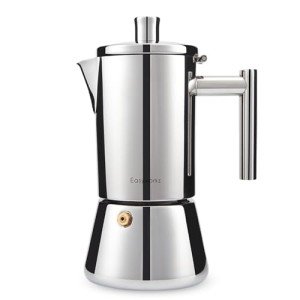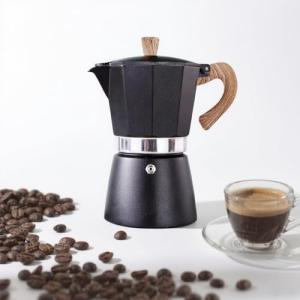For coffee enthusiasts, there is an art to brewing the perfect cup of espresso. Among the numerous coffee-making devices available, the polished stainless steel espresso stovetop coffee maker remains a perennial favorite. This classic brewing apparatus, often affectionately referred to as a moka pot, offers an inviting balance of tradition, functionality, and aesthetic appeal. In this article, we’ll explore the features, advantages, and proper usage of polished stainless steel espresso stovetop coffee makers, helping readers appreciate why they belong in every coffee lover's kitchen.
The Allure of Polished Stainless Steel
Polished stainless steel not only gives a sleek and modern look but also provides durability and resistance to rust and corrosion. These qualities make stainless steel moka pots an excellent choice for both everyday use and special occasions.
Benefits of Using Polished Stainless Steel in Espresso Makers:
- Durable: Unlike aluminum, stainless steel is less prone to dents, scratches, and oxidation, ensuring your coffee maker looks stunning for years.
- Heat Distribution: Stainless steel offers superior heat retention and uniform distribution, allowing the water to reach optimal brewing temperatures.
- Non-reactive Material: It doesn’t interact with the coffee's flavors, ensuring a clean taste without metallic aftertastes.
- Easy to Clean: Polished surfaces do not absorb coffee oils as easily, making cleanup a breeze.
Anatomy of a Polished Stainless Steel Espresso Stovetop Coffee Maker
To truly appreciate the functionality of a stovetop espresso maker, it is essential to understand its components. A typical polished stainless steel moka pot consists of:
- Water Chamber: The bottom section where water is added, usually marked with a safety valve.
- Filter Basket: Where ground coffee is placed. It holds the coffee securely and allows brewed espresso to pass through.
- Spout: The curved part that allows the brewed espresso to flow out and into the serving pot.
- Upper Chamber: Where the brewed coffee accumulates, ready to be served.
- Handle: Typically made from heat-resistant materials, this part allows for safe handling of the pot.
Brewing Process: Step-by-Step
Using a polished stainless steel stovetop coffee maker is simple and rewarding. Here’s a concise guide to brewing the perfect espresso:
- Preparation: Start by measuring out the appropriate amount of water. Generally, the water should reach just below the safety valve.
- Add Coffee: Fill the filter basket with finely ground coffee. Level it off without pressing down to maintain proper espresso extraction.
- Assemble the Pot: Screw the upper and lower chambers together securely. Ensure that the rubber gasket seals tightly to avoid leaks.
- Heat It Up: Place the pot on medium heat. The key is to use a burner that matches the base size to optimize heat distribution.
- Watch for the Brew: As the water heats, steam will build, forcing the water up through the coffee grounds. Listen for the "gurgle," which indicates the espresso is almost ready.
- Serve and Enjoy: Once the gurgling ceases, remove the pot from heat. Allow to cool slightly before pouring into cups.
Why Choose a Polished Stainless Steel Espresso Maker?
The choice of coffee maker can significantly affect the brewing process and the flavor profile of the coffee. Here are some reasons why polished stainless steel espresso stovetop coffee makers are an exceptional option:
- Versatility: They can be used on various stovetops, including gas, electric, and induction (with specific models), making them accessible in most kitchens.
- Aesthetic Appeal: The shiny finish adds a touch of elegance to your kitchen counter, making it an attractive display piece.
- Portability: Many of these coffee makers come in compact sizes, making them great for travel or camping adventures.
- Affordability: Compared to electric espresso machines, stovetop moka pots are more budget-friendly while still providing an authentic espresso experience.
Care and Maintenance Tips
To ensure your polished stainless steel espresso stovetop coffee maker remains in prime condition, consider these maintenance tips:
- Regular Cleaning: Disassemble and rinse the pot with warm water after each use. Avoid using soap, as it may leave residual flavors.
- Inspect the Gasket: Check the rubber gasket periodically for signs of wear and replace it if necessary.
- Avoid Abrasives: When cleaning, steer clear of harsh scrubs or abrasive cleaners that can scratch the polished surface.
- Dry Thoroughly: After washing, allow the components to dry completely to prevent corrosion.
FAQs
Q1: Can I use a stovetop espresso maker on an induction cooktop?
A1: Yes, but ensure that you are using a stainless steel moka pot specifically designed for induction use, as it will have a magnetic base.
Q2: How fine should my coffee grounds be for a stovetop espresso maker?
A2: The grind should be somewhere between espresso grind and drip coffee grind—fine but not powdered.
Q3: Can I make coffee in a polished stainless steel stovetop coffee maker without a stovetop?
A3: Some models can be used on open flames or even on camping stoves, offering flexibility in various settings.
Q4: How do I know when my stovetop espresso maker has brewed enough coffee?
A4: Listen for the bubbling sound, which indicates that the brewing process is almost complete. Once this dies down, the brewing is done.
Polished stainless steel espresso stovetop coffee makers are more than just coffee-brewing devices—they are a testament to the craft of making espresso. Combining durability with aesthetic elegance, they offer coffee lovers a reliable and stylish way to enjoy a rich, aromatic cup of espresso at home. Whether you're a novice or a seasoned barista, investing in a quality stovetop coffee maker is sure to enhance your coffee-making journey, making every sip a delight.






